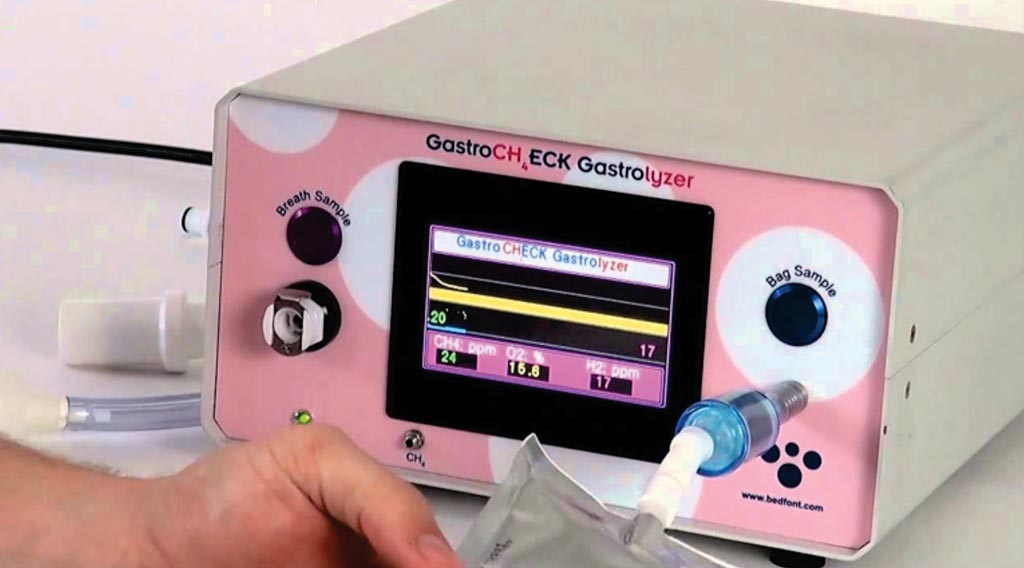Exhaled Breath Test Diagnosis of Cancer Assessed
By LabMedica International staff writers
Posted on 30 May 2018
In the United Kingdom, upper gastrointestinal symptoms account for at least 3% of consultations in primary care and many patients present with advanced-stage disease and only 38% of cases can be treated with a curative intent.Posted on 30 May 2018
Early esophagogastric cancer (OGC) stage presents with nonspecific symptoms. Volatile organic compounds (VOCs) emitted from the human body have been of interest to scientists for several decades, with associations previously suggested between specific VOCs and breath and lung, bladder, and breast cancers.

Image: The GastroCHECK Gastrolyzer breath test monitor (Photo courtesy of coVita).
In a multicenter diagnostic study, led by those at Imperial College London (UK), scientists recruited 335 patients, including 172 patients with esophagogastric cancer; a breath test demonstrated good diagnostic accuracy. Patients 18 years or older with upper gastrointestinal symptoms attending for endoscopy or surgery were eligible. In the cancer cohort only patients with histologically confirmed nonmetastatic esophagogastric adenocarcinoma (stage I-III) were included. All patients in the cancer cohort were sampled when they were neoadjuvant naive.
Patients were asked to perform a single deep nasal inhalation followed by complete exhalation via their mouth into secure 500-mL steel breath bag (GastroCHECK, coVita, Santa Barbara, CA, USA) via a 1-mL Luer-lok syringe. Patients in the cancer and control groups were recruited consecutively. Breath samples were returned to a central laboratory for selected ion flow tube mass spectrometry (SIFT-MS) analysis. Histopathology examination of tissues obtained via endoscopy or from surgically resected specimens was carried out. The reference test was considered positive on OGC histopathology diagnosis.
The scientific team reported that patients in the OGC group were older (median [IQR] age 68 [60-75] versus 55 [41-69] years) and had a greater proportion of men (134 [82.2%]) versus women (81 [47.4%]) compared with the control group. Of the 163 patients with OGC, 123 (69%) had tumor stage T3/4, and 106 (65%) had nodal metastasis on clinical staging. The predictive probabilities generated by this 5-VOCs diagnostic model were used to generate a receiver operator characteristic curve, with good diagnostic accuracy, area under the curve of 0.85. This translated to a sensitivity of 80% and specificity of 81% for the diagnosis of OGC.
The authors concluded that their study shows the potential of breath analysis in noninvasive diagnosis of OGC in the clinical setting as the validation study showed a sensitivity of 80% and a specificity of 81% for the breath test to diagnose esophagogastric cancer. The study was published May 17, 2018, in the journal JAMA Oncology.
Related Links:
Imperial College London
coVita













